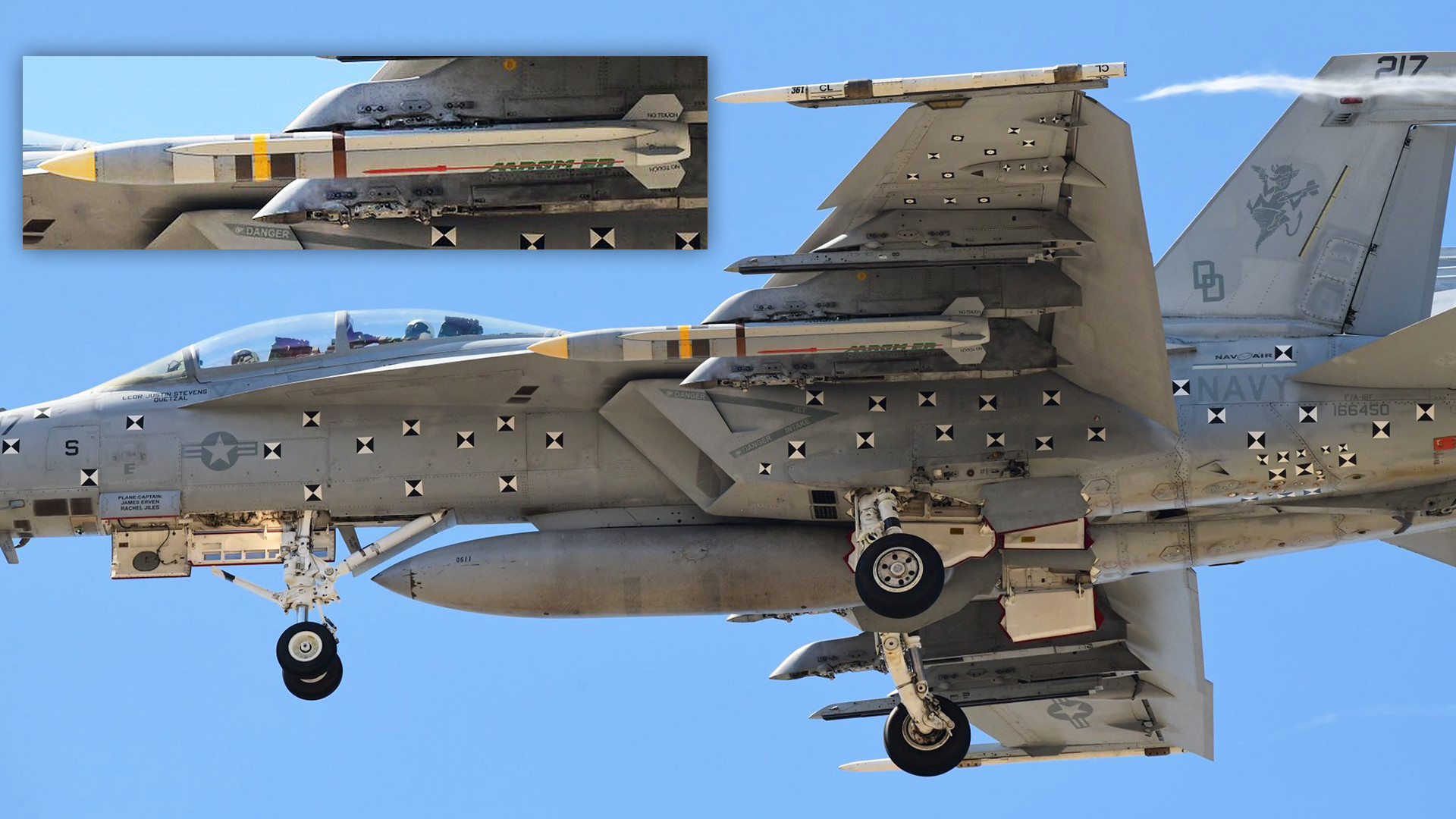Pictures of a U.S. Navy F/A-18F Super Hornet flying around Point Mugu in California have given us our best look to date at a live example of the new AGM-88G Advanced Anti-Radiation Guided Missile-Extended Range missile, or AARGM-ER. Point Mugu has garnered a lot of attention recently for a large test exercise that it is currently hosting featuring a number of test aircraft, including two Navy F-35Cs with different types of mirror-like coatings, as you can read more about here.
Photographer Rick Kane snapped the pictures, seen at the top of this story and below, of the AARGM-ER-armed F/A-18F Super Hornet. The aircraft in question belongs to Air Test and Evaluation Squadron 31 (VX-31), the “Dust Devils,” which is based at Naval Air Weapons Station China Lake, also in California. The Navy currently expects to reach an initial operational capability with these advanced air defense-busting missiles on its Super Hornets in the 2023 Fiscal Year.
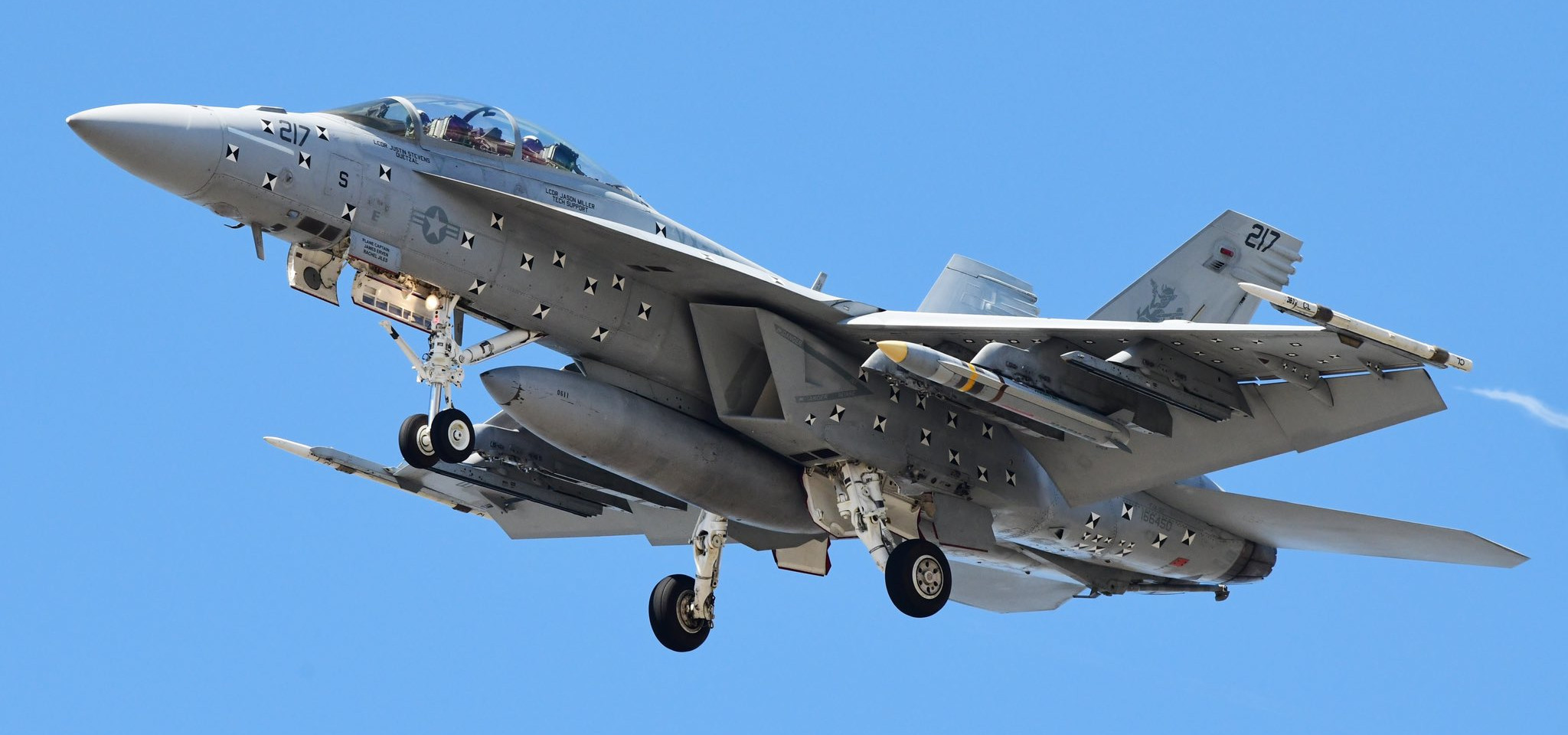
The yellow band around a section of body of the AARGM-ER loaded onto the VX-31 F/A-18F indicates that it has a live warhead installed. This particular missile has a red-and-green colored commercial-style logo along the rear of its body, something that would not necessarily be seen on production weapons.
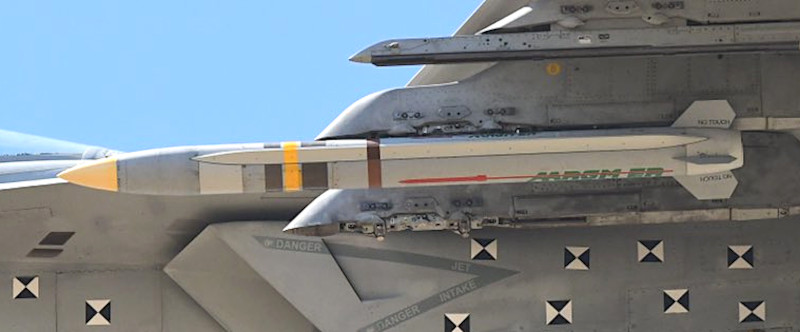
AARGM-ER is still in development, though various flight testing activities, including launches of live rounds, have occurred already. This missile is the latest in the AGM-88 series, which, like all anti-radiation missiles, is primarily designed to zero in on enemy signal emitters, especially radars associated with hostile air defense systems, and neutralize them.
The core AGM-88 design dates back to the 1970s and has recently gained new international attention following the integration of older variants onto Ukrainian Air Force MiG-29s, as you can read more about here. However, while the AGM-88G reuses some components from the preceding AGM-88E AARGM variant, the AARGM-ER is optimized for increased speed and range. It has an entirely new overall profile with control fins only at the rear and an improved rocket motor.

Though the exact range and peak speed of the newest AGM-88 version are unknown, the AGM-88E is understood to be able to hit targets out to around 80 miles at least and hit a speed of up to Mach 2 during the terminal phase of its flight. The AGM-88G’s performance should far exceed that of its predecessor, and should just generally be more capable, as you can read more about here.
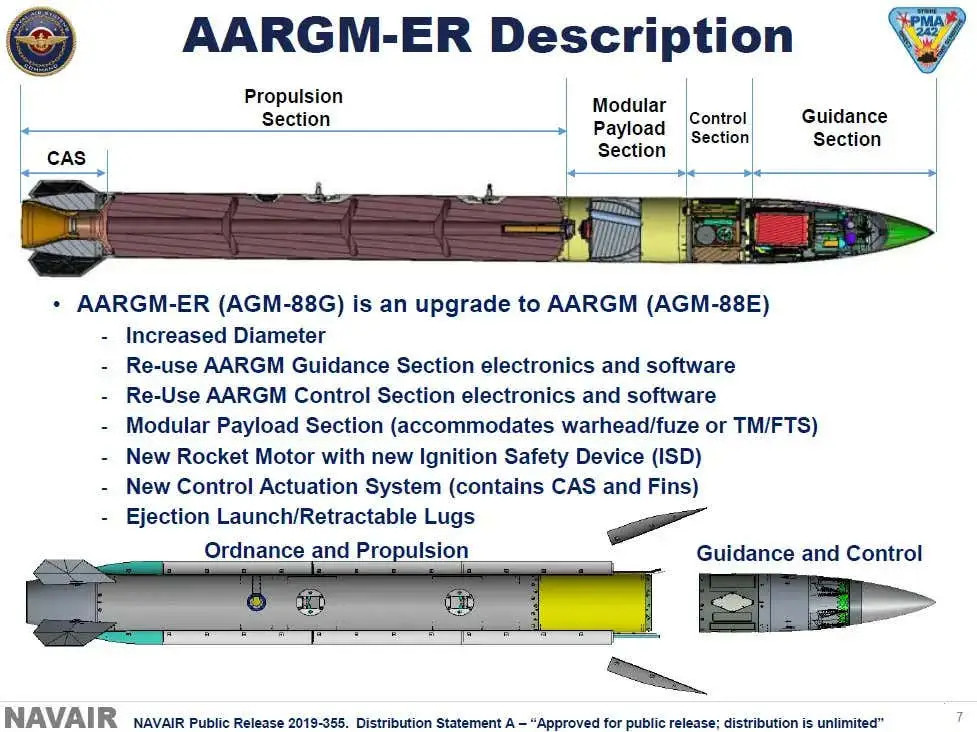
The AGM-88G also has a modular payload section and has otherwise been designed with growth potential in mind. Manufacturer Northrop Grumman is already developing a more general strike derivative, known as the Stand-In Attack Weapon (SiAW), for the U.S. Air Force, and has proposed using the missile as the basis for a ground-launched strike weapon.
As already noted, the Navy expects to reach initial operational capability (IOC) with the AARGM-ER, at least in combination with its F/A-18E/F Super Hornet, in the 2023 Fiscal Year, which begins on Oct. 1, 2022. The service also plans to integrate the missile onto the EA-18G Growler electronic warfare jet and its F-35C Joint Strike Fighters. The AGM-88G is also being integrated onto U.S. Air Force F-35As and U.S. Marine Corps F-35Bs. However, the F-35B has smaller internal weapon bays than the F-35A and C, and therefore will only be able to carry AARGM-ER externally.
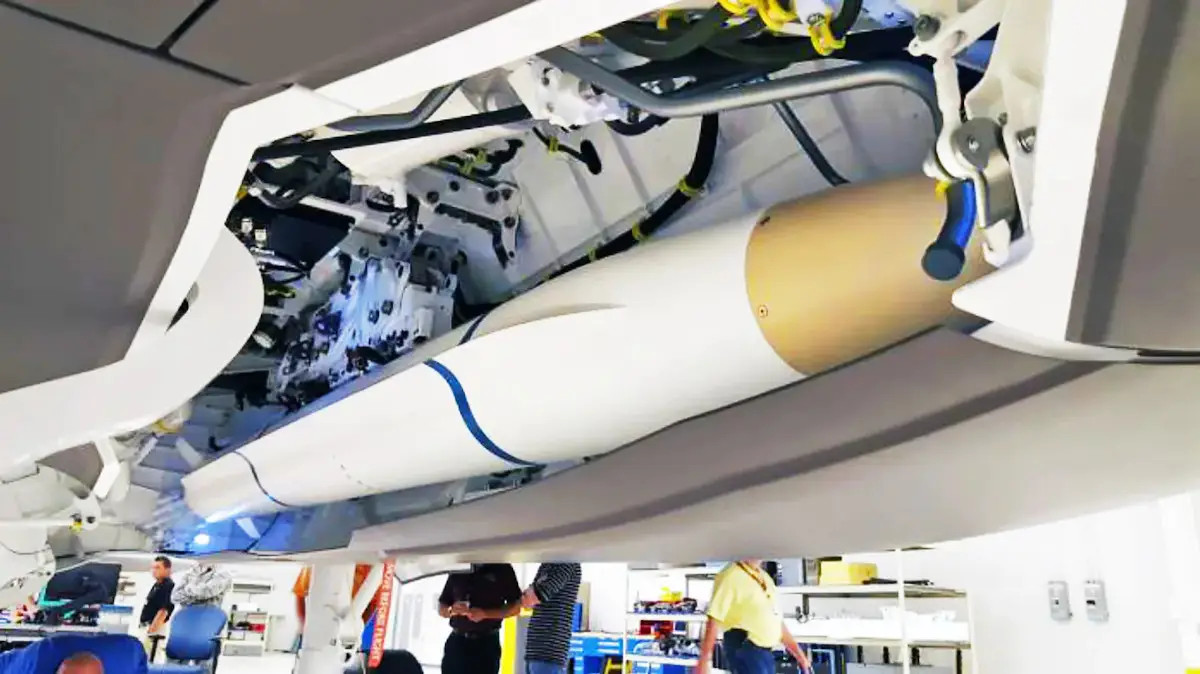
We don’t know exactly what brought the VX-31 Super Hornet and the live AARGM-ER under its wing to Point Mugu, but it could be part of continued tests of this weapon ahead of the expected IOC determination. The Navy, in cooperation with Northrop Grumman, has certainly conducted multiple test launches of prototype AGM-88Gs over the Point Mugu Sea Range off the coast of southern California. The VX-31 F/A-18F is also covered in black-and-white square reference markings commonly seen applied to aircraft during various kinds of flight testing.
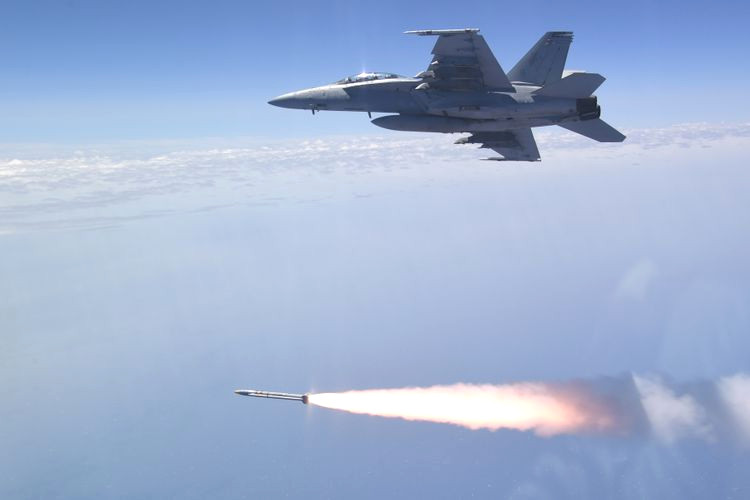
As already mentioned, the appearance of the AARGM-ER-equipped F/A-18F at Point Mugu also comes as the base is hosting what appears to be the latest iteration of the Navy-led Gray Flag test and evaluation exercise series, though there is no clear indication one way or another that these two things are related. A variety of other aircraft from the Navy’s flight test community, as well as those within the Air Force and Marine Corps, have been spotted arriving at Point Mugu recently for the exercise, which looks to have a heavy focus on various advanced capabilities intended to challenge the ability of enemy forces to spot, track, and target friendly aircraft.
It includes the participation of the two Navy F-35Cs from VX-9, each with a different style of metallic-looking coating. Stealthy U.S. Air Force F-35A aggressors, along with some of the service’s remaining fleet of F-117 Nighthawk stealth combat jets that also now serve in this role, are also taking part. At least one EA-18G Growler carrying a pair of new AN/ALQ-249(V)1 Next Generation Jammer-Mid-Band (NGJ-MB) electronic warfare pods has been spotted, too. You can read more about all of this here.
Whatever the case, the Navy is moving ever closer to fielding the AARGM-ER. The missile will give the service’s tactical aviation units, including those assigned to its Air Wings, a new and increasingly critical tool for penetrating through ever more capable hostile air defense networks. That same capability is set to filter out to the Air Force and Marine Corps.
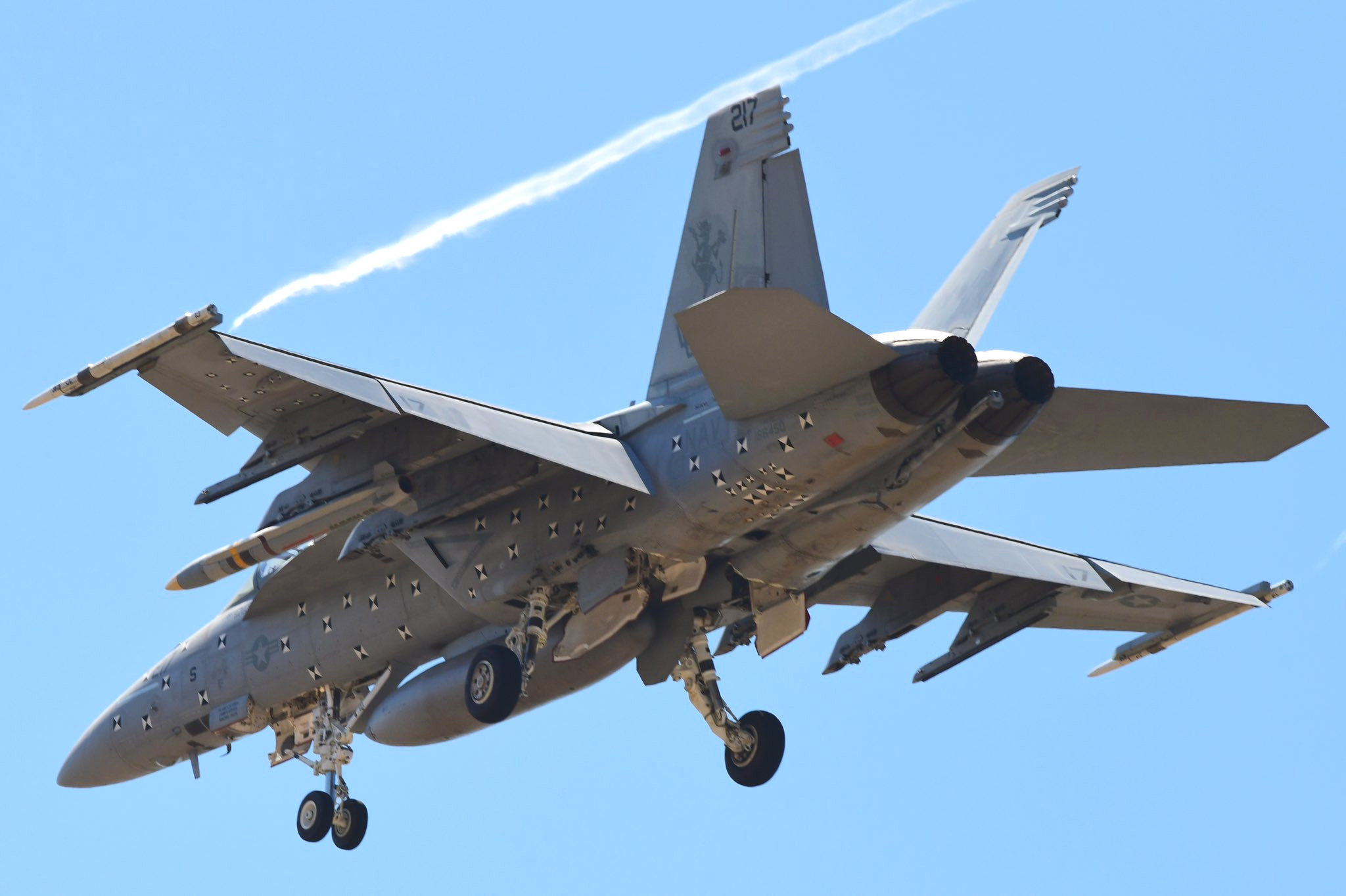
The importance of the AGM-88G is only underscored by how significant older AGM-88 variants, which are likely being used in ways that do not even take full advantage of their more limited capabilities, have already proven to be in Ukraine’s fight against Russia’s all-out invasion.
If the schedule remains unchanged, the Navy should begin fielding the first of these missiles to operational units before the end of next year.
Contact the author: joe@thedrive.com
